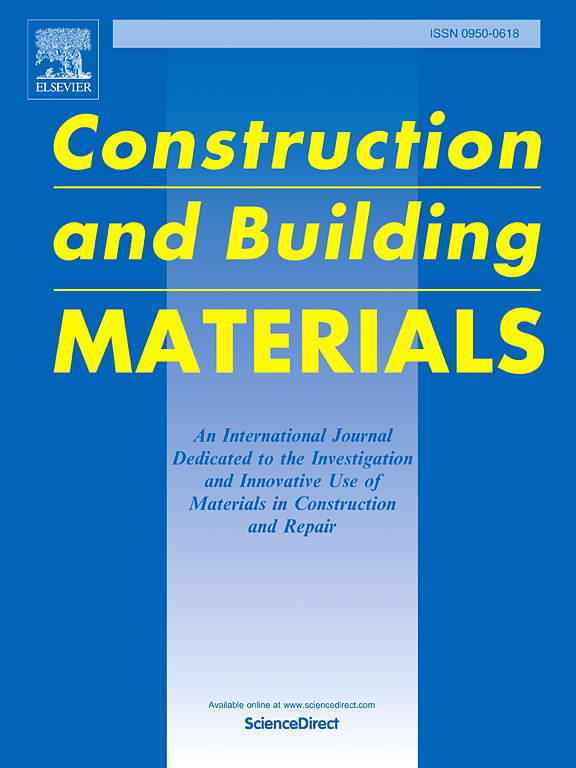Change of crack widths and anatomy of cracks within the cover of reinforced concrete tension members
IF 7.4
1区 工程技术
Q1 CONSTRUCTION & BUILDING TECHNOLOGY
引用次数: 0
Abstract
The literature hypothesizes the existence of a softening zone due to the formation of internal cracks in concrete around embedded reinforcing bars in tension, however, the magnitude of the effect of this softening on the width of primary structural cracks along the concrete cover is still unknown. This paper analyses experimental observations made on reinforced concrete ties, in which the primary structural cracks have been conserved in loaded condition with epoxy injection. It is experimentally demonstrated that a transition point marks the extent of the zone of concrete softening in the change of the crack width along the concrete cover. The location of the transition point and the crack width at the transition point shows a correlation with the thickness of the concrete cover. A simplified engineering model is proposed in a bilinear form for the crack width development along the concrete cover that is demonstrated to provide good prediction for the crack widths. A detailed assessment completes the analysis with identifying multiple crack geometry parameters in the general anatomy and constrictedness of structural cracks for the development of physical models in the future for crack tortuosity in concrete.
钢筋混凝土受拉构件覆盖层裂缝宽度变化及裂缝解剖
文献假设存在一个软化区,这是由于在受拉的预埋钢筋周围的混凝土内部裂缝的形成,然而,这种软化对沿混凝土覆盖层的初级结构裂缝宽度的影响程度仍然未知。本文对钢筋混凝土拉杆的试验观察结果进行了分析,结果表明,在加载条件下,环氧树脂对混凝土拉杆的初裂缝有一定的保护作用。实验表明,裂缝宽度沿混凝土覆盖面变化时,有一个过渡点标志着混凝土软化区的程度。过渡点的位置和过渡点处的裂缝宽度与混凝土覆盖层厚度呈相关关系。提出了沿混凝土覆盖层裂缝宽度发展的双线性简化工程模型,该模型能较好地预测裂缝宽度。详细的评估完成了分析,确定了结构裂缝的一般解剖和收缩中的多个裂缝几何参数,为未来混凝土裂缝弯曲的物理模型的发展奠定了基础。
本文章由计算机程序翻译,如有差异,请以英文原文为准。
求助全文
约1分钟内获得全文
求助全文
来源期刊

Construction and Building Materials
工程技术-材料科学:综合
CiteScore
13.80
自引率
21.60%
发文量
3632
审稿时长
82 days
期刊介绍:
Construction and Building Materials offers an international platform for sharing innovative and original research and development in the realm of construction and building materials, along with their practical applications in new projects and repair practices. The journal publishes a diverse array of pioneering research and application papers, detailing laboratory investigations and, to a limited extent, numerical analyses or reports on full-scale projects. Multi-part papers are discouraged.
Additionally, Construction and Building Materials features comprehensive case studies and insightful review articles that contribute to new insights in the field. Our focus is on papers related to construction materials, excluding those on structural engineering, geotechnics, and unbound highway layers. Covered materials and technologies encompass cement, concrete reinforcement, bricks and mortars, additives, corrosion technology, ceramics, timber, steel, polymers, glass fibers, recycled materials, bamboo, rammed earth, non-conventional building materials, bituminous materials, and applications in railway materials.
 求助内容:
求助内容: 应助结果提醒方式:
应助结果提醒方式:


